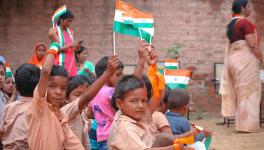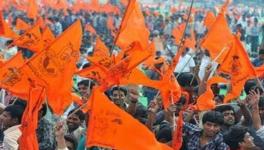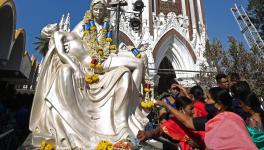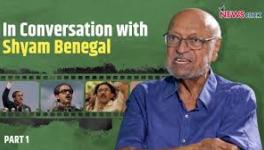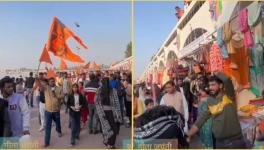How Do We Help the Arts Flourish?
In a country as diverse as India, the arts – part of our living, breathing culture – must flourish too, like multiple streams that occasionally flow into the same vast ocean. The creative practice of the arts, whether it is “high culture” or “popular culture”, demands a conducive climate. Such a climate is only possible when practitioners are free to speak in different artistic voices and languages; and to make use of any image, metaphor and symbol that produces unexpected and insightful connections. What artists do for all of us is push the boundaries, and make breakthroughs in the way we see and understand our world. This is how the arts give us that momentary glimpse into our lives as thinking, feeling, expressing beings.
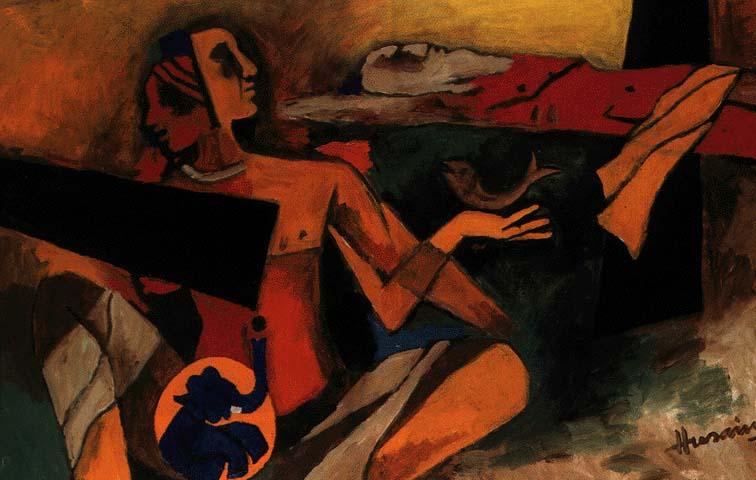
Maqbool Fida Husain, ‘The Birth of Buddha’ / mfhussain.com
Some of our recently anointed custodians of the arts may have trouble understanding these basic requirements for culture in general, and the arts in particular, to flourish and grow. With the Film and Television Institute example still fresh in our minds, we now have the Indira Gandhi National Centre for Arts (IGNCA) example.
One of the numerous stated objectives of the IGNCA is “to provide a forum for a creative and critical dialogue through performances, exhibitions, multi-media projections, conferences, seminars and workshops between and amongst the diverse arts, traditional and contemporary”; and “to elucidate the formative and dynamic factors in the complex web of interactions between diverse social strata, communities and regions.” These are challenging tasks for anyone, demanding depth of knowledge about the arts, as well as an open mind to the diversity of artistic practice and experiment.
Now consider the peculiar qualifications of just a couple of the new IGNCA custodians. In 2000, D.P. Sinha, national chief of the “Dramatic Cell” of Sanskar Bharti, was sent to Varanasi by the Sangh Parivar to “assess the situation” of a film being shot there by Deepa Mehta. The film, Water, set in 1938, explores the lives of widows in an ashram in Varanasi. A film by a “foreign national”; a film on the misery Hindu widows are reduced to in a holy city! It must be banned even before it is shot. The shooting must be suspended. The Sanskar Bharati wrote to the Chief Minister of Uttar Pradesh, Ram Prakash Gupta. The letter demanded an immediate ban on the shooting of Water in Varanasi.
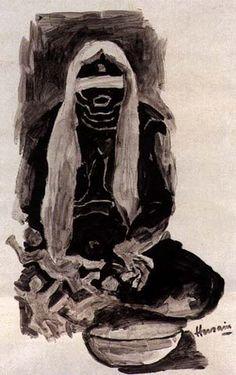
Husain, ‘Gandhari’ / mfhussain.com
This is a mind-set fundamentally opposed to the freedom of theme and approach required for anyone to practice her or his art.
Nothing changed in the “sanskar” of these deshbhakts over ten years, a consistent blinkered view being one of their virtues. In the mid-nineties, those with such a view found something else to target and censor.
They decided that the highly acclaimed work of artist M.F. Husain hurt, in the words of D.P. Sinha of the Sanskar Bharati, “the religious feelings of a very large section of society”. Husain’s paintings of the goddesses Durga and Saraswati, around since the seventies, suddenly became visible to them as naked and obscene. The paintings were reprinted in a Hindi magazine with the title “MF Husain: A Painter or Butcher”. Husain and his work were attacked by vandals who clearly never look around them, since degrees of nudity are hardly new in either temples or on the streets in India.
Does telling an artist what theme to choose, and how to approach this theme, help the arts in any way? Does chasing an artist away from the country help the arts, (or a democracy) in any way? The answer is clear to those who make art, think about it, read and write about it, discuss and debate it. The Bajrang Dal, the Sanskar Bharati and friends went to war, not just against M.F. Husain, but the very idea of what a society must do to enrich its artistic life, its culture.
Husain was harassed with vandalism and hundreds of court cases; he was issued with death threats. To the shame of all Indians, he had to leave the country in his old age and move to Qatar. He died in London in 2011. Indian newspapers then carried headlines about a nation in mourning for one of its iconoclastic artists.
D.P. Sinha, now inducted into the IGNCA, was one of the leading lights of the attack on M.F. Husain.
The new chair of the IGNCA board, Ram Bahadur Rai, was organising secretary of the ABVP in the seventies. The ABVP, as we know from the headlines of recent months, has not exactly respected the right to freedom of expression, nor shown a willingness to encourage debate. It seems to favour “debate” with sticks and stones.
If the IGNCA, courtesy some of its new board members, adopts an ignorant and dangerous view of the arts, it will make a mockery of its objectives. And all of us, not just artists, will be the losers.
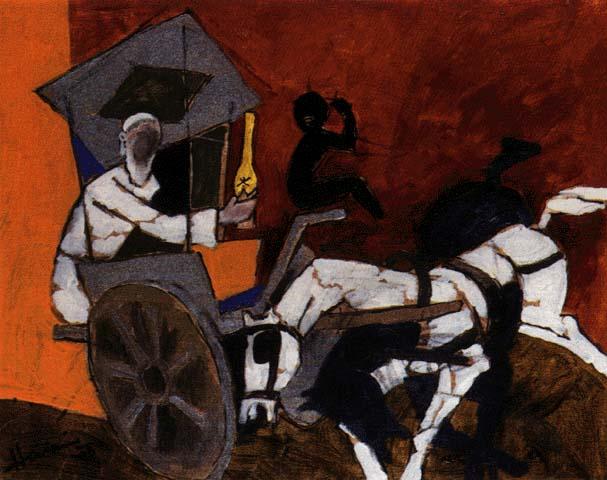
Husain, Untitled / Jalakamt
Disclaimer: The views expressed here are the author's personal views, and do not necessarily represent the views of Newsclick
Get the latest reports & analysis with people's perspective on Protests, movements & deep analytical videos, discussions of the current affairs in your Telegram app. Subscribe to NewsClick's Telegram channel & get Real-Time updates on stories, as they get published on our website.










